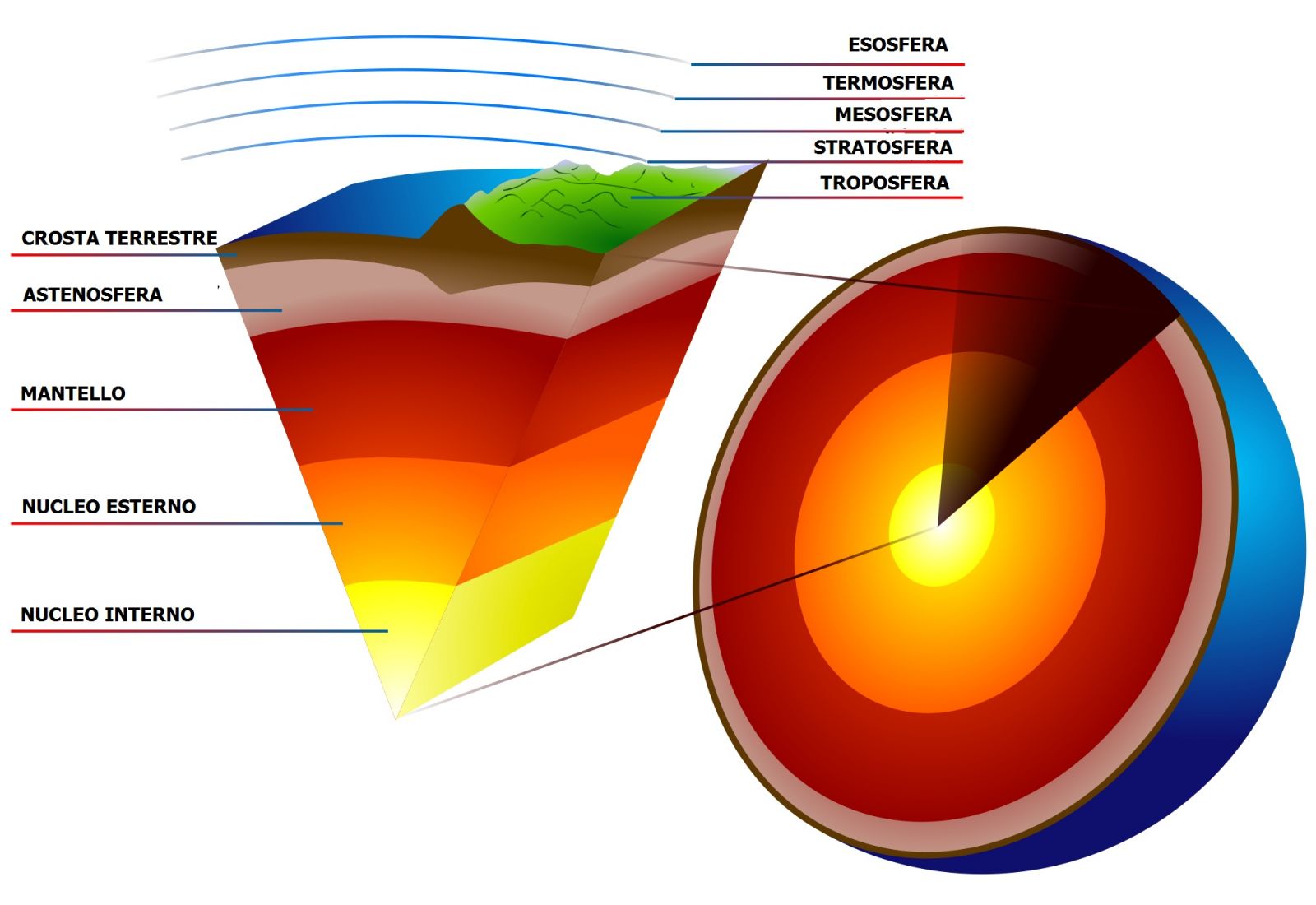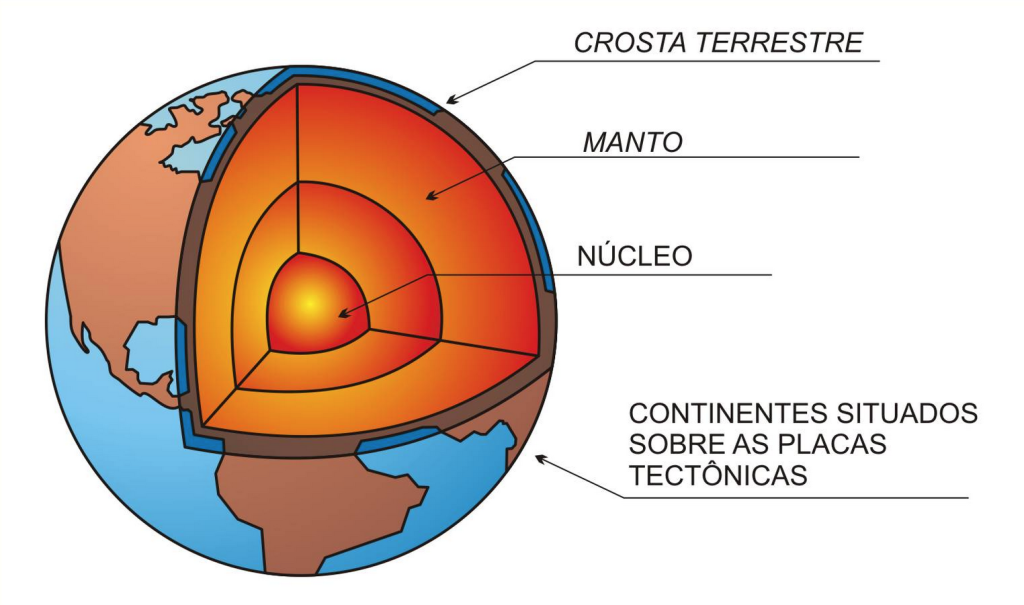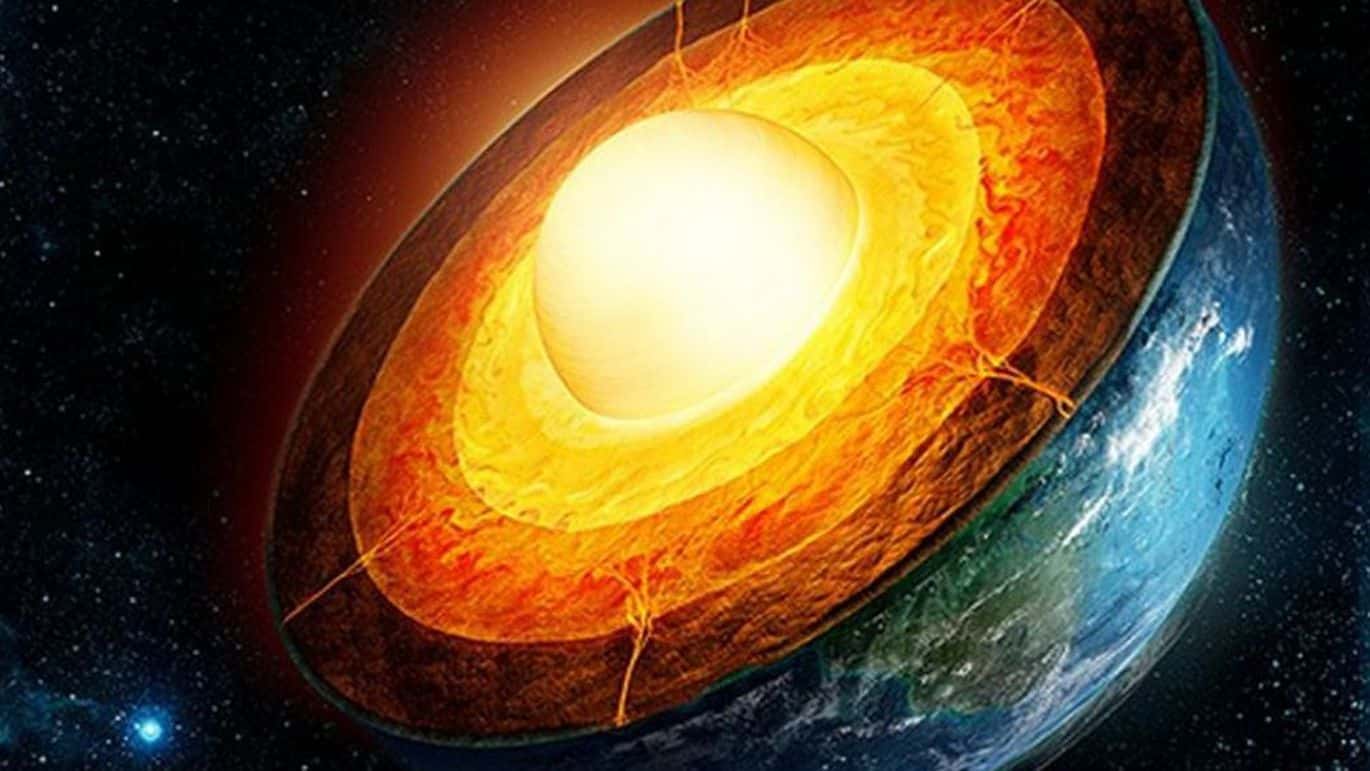Understanding Earth's Structure: Layers & Composition
Do you ever wonder what lies beneath our feet, beyond the familiar landscape of mountains and valleys? The Earth's structure is a dynamic and complex system composed of distinct layers, each playing a crucial role in shaping our planet and supporting life as we know it. Exploring these layers the crust, mantle, and core reveals a world of geological wonders and fundamental processes that continue to mold our world.
Understanding the Earth's layered structure requires a journey from the surface to its deepest interior. The outermost layer, the crust, is where we live, the solid ground upon which our cities and ecosystems are built. Beneath the crust lies the mantle, a vast region of hot, dense rock. And at the heart of it all is the core, composed of iron and nickel, a sphere of immense pressure and heat. Each layer possesses unique characteristics and influences the other, making our planet a constantly evolving entity. The study of these layers allows us to comprehend tectonic activity, volcanism, and the magnetic field that shields us from cosmic radiation. It also provides insights into the planet's formation and its ongoing evolution.
Here's a breakdown of the Earth's layered structure:
| Layer | Description | Key Characteristics |
|---|---|---|
| Crust | The outermost solid shell of the Earth. |
|
| Mantle | Located below the crust, extending to a depth of approximately 1,800 kilometers. |
|
| Core | The Earth's innermost layer, composed of two parts: the outer core and the inner core. |
|
The formation of the Earth's crust is intimately linked to the processes that shaped the planet from its earliest days. To understand the structure of the crust, it's essential to consider the formation process accepted for our planet. The crust is the Earth's outermost layer, fundamentally composed of rocks and minerals. The processes that shape the crust are multifaceted, including the relentless actions of weathering and erosion. The relentless forces of the atmosphere and the movement of water and ice. The crust is not a static shell; it is in a constant state of transformation.
The Earth's crust is also characterized by the movement of tectonic plates, which constantly shift and interact with each other. This dynamic process is responsible for a diverse range of geological phenomena, including the formation of mountain ranges, earthquakes, and volcanic eruptions. The slow but persistent drift of continents across the Earth's surface is evidence of this underlying activity. The crust itself is fragmented due to the formation of tectonic plates, a process that has dramatically shaped the continents and oceans over millions of years.
A peridotite sample is a fascinating example of the rocks commonly found within the Earth's mantle. The mantle, situated beneath the crust, is a region of immense pressure and temperature, primarily composed of solid rock that behaves in a plastic manner over geologic timescales. Studying these samples helps scientists understand the composition and behavior of the mantle, providing insights into the dynamics that drive plate tectonics and the Earth's overall internal processes. The mantle is a critical component, transferring heat from the core to the crust.
The Earth's core, both the inner and outer sections, is a remarkable feature of our planet, with a radius of around 3470 km, and it extends from a depth of 2900 km (Gutenberg discontinuity) to the center of the earth. At the heart of it all is the core, composed of iron and nickel, a sphere of immense pressure and heat.
There are many differences between the Earth's crust, mantle, and core. The crust is the outermost solid layer, relatively thin, and composed of rocks and minerals, forming the landforms we see and the ocean floors. The mantle is a thicker layer beneath the crust, composed of hot, dense, and partially molten rock, with solid but flowing behavior over geologic timescales. The core is the Earth's innermost part, comprised of a liquid outer core and a solid inner core, primarily made of iron and nickel. These distinctions lead to the dynamic character of the planet, influencing various geological processes, including volcanism, seismic events, and the generation of the Earth's magnetic field.
The Earth comprises three primary layers, each exhibiting distinct characteristics. The outermost layer is the crust, principally composed of rocks and minerals, broken into tectonic plates. The mantle is located below the crust. It presents solid properties, with hot and malleable rocks and magma. The core is the innermost and hottest part, comprising liquid magma at the outer core and a solid inner core.
The Earth's crust is where we discover terrestrial forms like mountains, valleys, and plains. The mantle is the Earth's most extensive layer, situated beneath the crust, and extending to a depth of about 1,800 kilometers. This layer is characterized by its internal heat and plasticity, which significantly influences the movement of tectonic plates and geological phenomena such as earthquakes and volcanic eruptions. The core is the innermost layer, made up of a solid inner core and a liquid outer core. The liquid outer core is responsible for generating the Earth's magnetic field, protecting the planet from the harmful effects of solar winds.
The Earth's crust is the most external part of the Earth and is also known as the lithosphere. It is composed of minerals like iron, magnesium, and aluminum, as well as rocks. Within this part, seismic variations often occur faster and more fluidly in relation to its external composition. This part separates the crust from the Earth's mantle.
The mantle is the most expansive layer of the Earth, positioned below the crust. This layer is formed from various rock types, such as silicon and others. This is a critical aspect, as it influences the movement of tectonic plates. The mantle contains hot and malleable rocks, which are also found in the composition of magma. The dynamics of the mantle play a significant role in the internal processes of our planet, influencing volcanism, seismic activity, and the generation of the Earth's magnetic field.
The crust, mantle, and core are the Earth's internal layers, each exhibiting distinct characteristics, which play a vital role in the Earth's dynamic nature. These interact, providing our planet with its dynamism, which ultimately leads to geological processes. The Earth's layers are three: the crust, mantle, and core.
The Earth's crust undergoes transformations both on the surface (caused by atmospheric agents) and in depth (caused by temperature and pressure variations). When the transformations that rocks undergo are prolonged over time and the force acting on them is particularly strong, they can no longer return to the conditions they had before. It is constantly exposed to weathering, erosion, and other geological processes, so these transformations continually reshape the landscape.
The Earth's mantle is the largest of Earth's layers and is positioned between the two existing Earth continuities. Its depth ranges from 30 km to 2900 km, with temperatures that, at the deepest points, reach 2000C. This layer is a critical component, transferring heat from the core to the crust. Within this layer, the hot and malleable rocks are also found in the composition of magma. The dynamics of the mantle play a significant role in the internal processes of our planet, influencing volcanism, seismic activity, and the generation of the Earth's magnetic field.
The Earth's crust is the outermost part of our planet, of which it constitutes a solid shell of modest thickness (from a few km to a few tens of km). Despite the crust representing just 1% of the planet's volume, it is very complex and composed of a wide variety of elements, including oxygen, silicon, aluminum, iron, calcium, sodium, potassium, and magnesium. The crust is the foundation for various geological processes and the support system for life on Earth.
The core is located just below the Earth's crust. The core has a solid and extremely rigid outer part. The core has a liquid inner part made of magma.
The Earth's crust is made up of a single tectonic plate. The Earth's crust is composed of rocks and minerals, which differentiate in that rocks are composed of minerals or aggregates thereof. The Earth's crust is where we discover terrestrial forms like mountains, valleys, and plains. Understanding the Earth's layered structure allows us to comprehend tectonic activity, volcanism, and the magnetic field that shields us from cosmic radiation.


